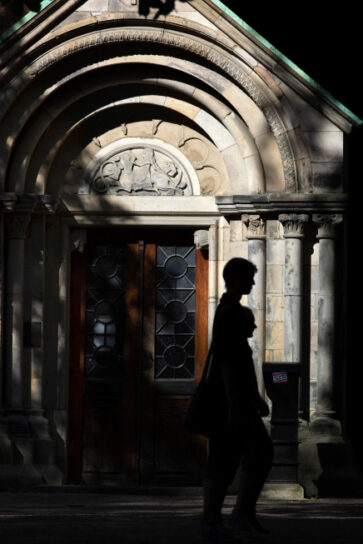- Open today 11–17
- Open today 11–17
On the Thresholds of Knowledge
As part of Lund University’s 350th anniversary celebrations, the whole of the King’s House will open to the public for the first time. A jubilee exhibition, On the Thresholds of Knowledge, will display works by thirteen international and local artists throughout the building.
The 16th century King’s House is one of the oldest buildings in Lund and was home to the University for many years. Over the centuries, an astronomical observatory and an anatomical theatre have been located here. The building is both a starting point for, and a part of, the site-specific exhibition. Now, visitors will have the opportunity to explore the building and discover the artworks displayed on all floors.
The exhibition reflects on issues concerning the nature of knowledge, where it is produced, how it is used and whom it is for. The artists approach the concept of knowledge and questions regarding the transfer of knowledge from different perspectives. The exhibition spans a broad field – from the simple, everyday objects and the small shifts in meaning of Magnus Thierfelder’s pieces to Myriam Lefkowitz’s sensory, non-verbal experiential works which occur at the intersection of snapshots, memory and imagination. Many of the artworks focus on books and language in various ways, as well as on various forms of verbal transfer of knowledge between teacher and student. In Heman Chong’s work, the transfer happens in real time, right there in the exhibition. In several artworks, science meets the world of fiction, in an investigation of how knowledge about the world is produced.
The Raqs Media Collective created the work entitled The Edge of Here and the End of Now specifically for the King’s House. Like a network throughout the exhibition, the work is spread over several floors. As its starting point, it takes the King’s House itself: a building used for a long time by the University’s philosophers and cognitive scientists, but which now stands empty. A fly they found on a wall in this building, where so much thinking has taken place, sets off a reflection on the possibilities of philosophy and the role of this building in history. The fly is present in the work of both Wittgenstein and Descartes, who is also believed to have spent time in Lund during his years in Sweden. A fragment of his scull is preserved in the Historical Museum. For Descartes, the perspective of the fly from its position on the ceiling was the starting point for the Cartesian system of coordinates – a definition of the here and now. Objects from Skissernas Museum – Museum of Artistic Process and Public Art and the Historical Museum, also part of the widespread Lund University, are among others presented on wallpaper and in a film. Epiphytes, plants that live in symbiosis with other plants but are not parasites, fill the top floor of the building and become a symbol of the cohabitation of thought and opportunity that a University represents.
The exhibition is curated by Patrick Amsellem and Christian Skovbjerg Jensen and co-produced by Skissernas Museum – Museum of Artistic Process and Public Art with the Inter Art Centre from the Faculty of Fine and Performing Arts. The project is funded by Lund University’s 350th anniversary jubilee with contributions from the City of Lund. The Botanical Garden and the University Library in Lund have been important cooperation partners for the exhibition.
Participating artists:
Meriç Algün, Christian Bang Jensen, Heman Chong, Elena Damiani, Nicoline van Harskamp, Hassan Khan, Myriam Lefkowitz, Henning Lundkvist, Alessandro Perini, Raqs Media Collective, Emilija Škarnulytė, Christian Skjødt, Magnus Thierfelder.

